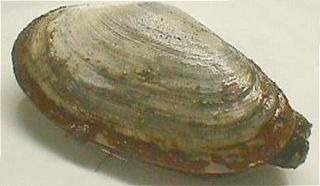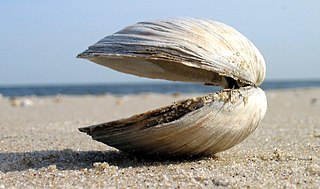
Clam is a common name for several kinds of bivalve molluscs. The word is often applied only to those that are edible and live as infauna, spending most of their lives partially buried in the sand of the ocean floor. Clams have two shells of equal size connected by two adductor muscles and have a powerful burrowing foot. Clams in the culinary sense do not live attached to a substrate and do not live near the bottom. In culinary usage, clams are commonly eaten marine bivalves, as in clam digging and the resulting soup, clam chowder. Many edible clams such as palourde clams are oval or triangular; however, razor clams have an elongated parallel-sided shell, suggesting an old-fashioned straight razor.

Ensis is a genus of medium-sized edible saltwater clams, littoral bivalve molluscs in the family Pharidae. Ensis, or razor clams, are known in much of Scotland as spoots, for the spouts of water they eject while burrowing into the sand, when visible at low tide. This term may also colloquially include members of the genus Solen. Ensis magnus are known as bendies due to their slightly curved shell.

Venus is a genus of small to large saltwater clams in the family Veneridae, which is sometimes known as the Venus clams and their relatives. These are marine bivalve molluscs.
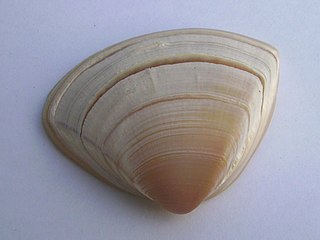
Spisula is a genus of medium-sized to large marine bivalve mollusks or clams in the family Mactridae, commonly known as surf clams or trough shells.

Cassis, common name the helmet shells, is a genus of very large sea snails, marine gastropod mollusks in the family Cassidae, the helmet shells and their allies. This is the type genus of the subfamily Cassinae.
M. arenaria may refer to:

Glabella is a genus of small tropical and warm-water sea snails, marine gastropod molluscs in the family Marginellidae, the margin snails.

Periglypta is a genus of bivalves in the family Veneridae.
Macrocallista is a genus of saltwater clams, marine bivalve mollusks in the family Veneridae, the Venus clams.

Lutraria lutraria is a species of large marine bivalve mollusc in the family Mactridae. Its common names include the otter shell and the common otter shell. It occurs in coastal regions of the north east Atlantic Ocean where it lives buried in the sand.
Kuphus is a genus of shipworms, marine bivalve molluscs in the family Teredinidae. There are four extinct species in the genus, Kuphus arenarius, Kuphus incrassatus, Kuphus fistula and Kuphus melitensis. The only extant species is Kuphus polythalamia, the longest bivalve mollusc in the world where the only known permanent natural habitat is Kalamansig, Sultan Kudarat in the Philippines.
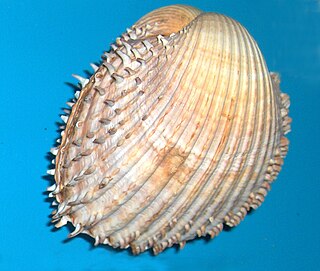
Acanthocardia is a genus of saltwater clams, marine bivalve molluscs in the family Cardiidae. Like most other bivalves, these mollusks are suspension feeders. This genus is present from the Upper Oligocene to the Recent.

Lopha is a genus of marine bivalve molluscs in the family Ostreidae.
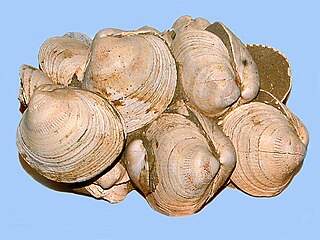
Glycymeris, common name the bittersweet clams, is a genus of saltwater clams, marine bivalve molluscs in the family Glycymerididae.

Paphia is a genus of saltwater clam, a marine bivalve mollusk in the family Veneridae, the Venus clams.

